Wairarapa Moana – the long path to its return
Dishonesty, theft, treachery. Three little-used words in the history of colonisation in New Zealand. Those words don’t appear in the official documents which, in late 2021, set out the end to Crown ownership of Wairarapa Moana _ Lake Wairarapa, and its return to local Iwi ownership.
They do, however, underpin the European history of contact with Lake Wairarapa and the return of the lake to Iwi due shortly _ some 128 years after it was “gifted” to the Crown by “the Native” owners in 1896.
The 2021 official documents recording the Crown settlement of the issues around the lake’s ownership note:
“The return of Wairarapa Moana to Ngāti Kahungunu ki Wairarapa Tāmaki nui-a-Rua Settlement Trust and Rangitāne Tū Mai Rā Trust was negotiated as part of the Te Rohe o Rongokako Joint Redress Act 2022.”
The language in the nine Deed of Settlement documents of 2021 does get more specific, with 1876 recorded as the date when the Crown first bought lands around the lake.
The Crown, in 2021, “acknowledges … (that at that point) it did not clearly define or confirm the boundaries with Ngati Kahungunu which led to an ongoing dispute about the ownership of land between the low and high water levels … and that has been a source of considerable grievance for Ngati Kahungunu.”
Again, in 1876 “it (the Crown) purchased the undefined interests in Wairarapa Moana of a few individuals without the consent of the wider (Ngati Kahungunu) community who were then compelled to participate in Native Land Court hearings to protect their interests.”
Until the 1880s, the lakes and the extensive wetlands around them would fill on a seasonal basis to cover over 21,000 hectares (52,500 acres). Wairarapa Moana today comprises Lakes Wairarapa and Onoke whose water levels are artificially maintained and cover nearly 10,000 hectares (about 24,000 acres).
In 1888 “it (the Crown) disregarded the customary interests and property rights of Ngati Kahungunu when it supported a local river board … to cut a channel through the Maori owned spit at Lake Onoke and significantly drain Wairarapa Moana.”
In 1889 “it promoted legislation … that gave authority to the local river board to continue to open the spit and dictate water levels in Wairarapa Moana but did not also act to protect Maori property rights in the spit and lakes.”
The result? The draining of Wairarapa Moana and its wetlands “diminished Ngati Kahungunu’s access to traditional resources and food gathering sites.” Ngati Kahungunu estimated 30 tonnes of eel/tuna a year, as well as fish, freshwater mussels, birds and other foods came from the lake “foodbasket” before the draining began.
In 2021, some 132 years later, “these cumulative Crown actions and omissions regarding the spit at Lake Onoke and the water level of Wairarapa Moana were in breach of te Tiriti o Waitangi/the Treaty of Waitangi and its principles and were a source of distress and grievance for Ngati Kahungunu,” the official settlement documents record.
The timeline of historic misdeeds records much more about the Crown, the lake and local Iwi.
In 1896 the Crown _ represented by Premier Richard Seddon _ accepted a tuku rangatira (chiefly gift) from Wairarapa Maori of Wairarapa Moana which was the Iwi’s way of offering an honourable conclusion to disputes over their ownership of the lake.
The chiefly gift “immediately benefited the Crown by giving it a clear title over Wairarapa Moana, which enabled it to address settlers’ concerns about flooding of land adjacent to the lakes.”
It was on 18 January 1896 that Seddon joined hundreds of Maori, the River Board, and settlers at Tipapaku (Pigeon Bush) for a hakari (feast) hosted by Ngati Kahungunu to celebrate the end of the long-running lakes dispute.
Seddon told the gathering that Wairarapa Moana “was given to the government and was accepted in that spirit and in that spirit it shall be ever dealt with.” He promised that Ngati Kahungunu’s rights to their fisheries, as guaranteed by the Treaty of Waitangi, would not be impeded.
Chief Tamahau responded on behalf of Ngati Kahungunu: “We gave them as a present from one chief to another,” and in return hoped “that you will have some affection, some love, for us.”
But, the documents record, the Crown “failed to meet its obligation under the tuku rangatira to provide ample reserves in the vicinity of the lakes, providing instead remote and inaccessible land north of Lake Taupo, at Pouakani, after a delay of two decades.”
That provision of “distant Pouakani land, in the rohe of other iwi, led to the dislocation of some Ngati Kahungunu whanau from their hapu and traditional homes, and deeply unsettled the relationships between other iwi and Ngati Kahungunu.”
The Settlement Documents record: “The reimbursement agreed under the 1896 tuku rangatira of Wairarapa Moana was paid but the promised lakeside reserves were never made (created). “Instead, in 1916, a large area of very poor land 600 kilometres away at Pouakani (near Mangakino) was vested in more than 200 iwi members.
“Under the 1896 tuku rangatira the Crown promised the Iwi that their customary fisheries in Wairarapa Moana ‘shall not be impeded’ and introduced predatory fish, such as trout and perch, would not be put in the lakes. These promises were not kept and the tuna and other fisheries have been severely depleted by introduced species, pollution, drainage of wetlands, and large-scale commercial fishing.”
It also notes: “Wairarapa Moana has been a culturally rich and spiritually significant taonga of Ngati Kahungunu, Rangitane and their tipuna for nearly a thousand years, treasured for its tuna, other fisheries, birdlife, and many other resources.”
The significance of the tuku rangatira for Ngati Kahungunu is reflected in references to it on the monument of Papawai as “the Treaty of Lake Wairarapa.”
There were more court battles over the lake and land.
In 1927 the local river board sought to aquire Takaputao, the last 200 acres at Wairarapa Moana, designated in 1883 by the Native Land court as “NR,” or Native Reserve.
The documents note: “The land was known by Ngati Kahungunu as Takapotao and contained a papakainga, urupa, cultivations and an eel-fishing place. Some Ngati Kahungunu petitioned the Crown that they had never alienated the land, wished to retain it, and asked that the Native Land Court be allowed to investigate title to the land.”
But the Under-Secretary of the Native Department, who was also the Chief Judge of the Native Land Court, responded that there “appears to be no authority” for designating the land as a Native Reserve, and asserted that the land had been incorrectly omitted from the 1883 survey of the Wairarapa Moana title and from the 1896 tuku.
He suggested that the Crown make an application to the Native Land Court to amend the title and survey plan so as to include the 200 acres within the boundary of the Wairarapa Moana block.
The official documents further record: “In January 1929 the Crown supplied an amended plan of the Wairarapa Moana title to the Chief Judge of the Native Land Court. The Chief Judge advised that the Crown refrain from pursuing the amendment as the Court was still dealing with an application for the investigation of title to the land and ‘the Natives might be suspicious that undue advantage was taken of them.’”
In September 1930, the Kahungunu applicants’ case was dismissed by the Native Land Court “for want of prosecution” (lack of action). The Chief Judge advised that the issue of amending the plan was being left until the end of the Parliamentary term, “in case the Natives should lodge a further petition in the matter.”
“In November 1930, the Native Land Court sat to issue an order amending the 1883 and 1896 titles to include the 200 acres. The Court sitting was not gazetted or advertised and Ngati Kahungunu claimants to the land were seemingly unaware that their application for title investigation had been dismissed or that a Court order regarding the amended plan had been issued.
“In January 1931, a new title was issued to the Crown for Wairarapa Moana, including the 200 acres. Ngati Kahungunu continued to seek title to the 200 acres. When river protection works began at Takaputao in 1932 they protested at the threat this posed to their urupa on what they still mistakenly believed was their reserve. In 1933 the land was transferred to the River Board. Ngati Kahungunu filed a further petition about the land in 1933 which was referred to the Native Land Court for inquiry. In 1936, the Court determined that it had ‘no recommendation to make’.
A wide-ranging petition on issues related to Wairarapa Moana and Wairarapa lands was submitted to the Crown by Ngati Kahungunu in 1938 referred to the 200 acres. The Chief Surveyor relied on the 1930 amended plan to rebut the petition.
Years of petitions, court action and Waitangi Tribunal investigation and hearings followed, till a formal agreement, some reparations and an apology to the traditional owners were agreed and signed off in 2021.
Deed of Settlement Documents: https://www.tearawhiti.govt.nz/te-kahui-whakatau-treaty-settlements/find-a-treaty-settlement/ngati-kahungunu-ki-wairarapa-tamaki-nui-a-rua/


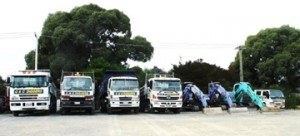


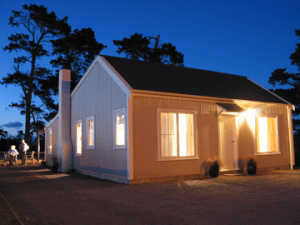
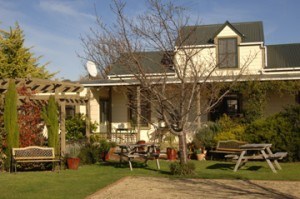
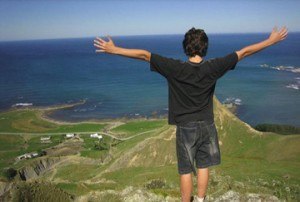

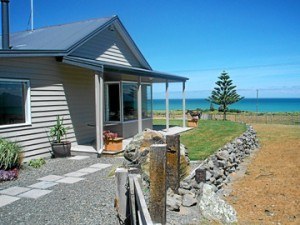





Recent Comments